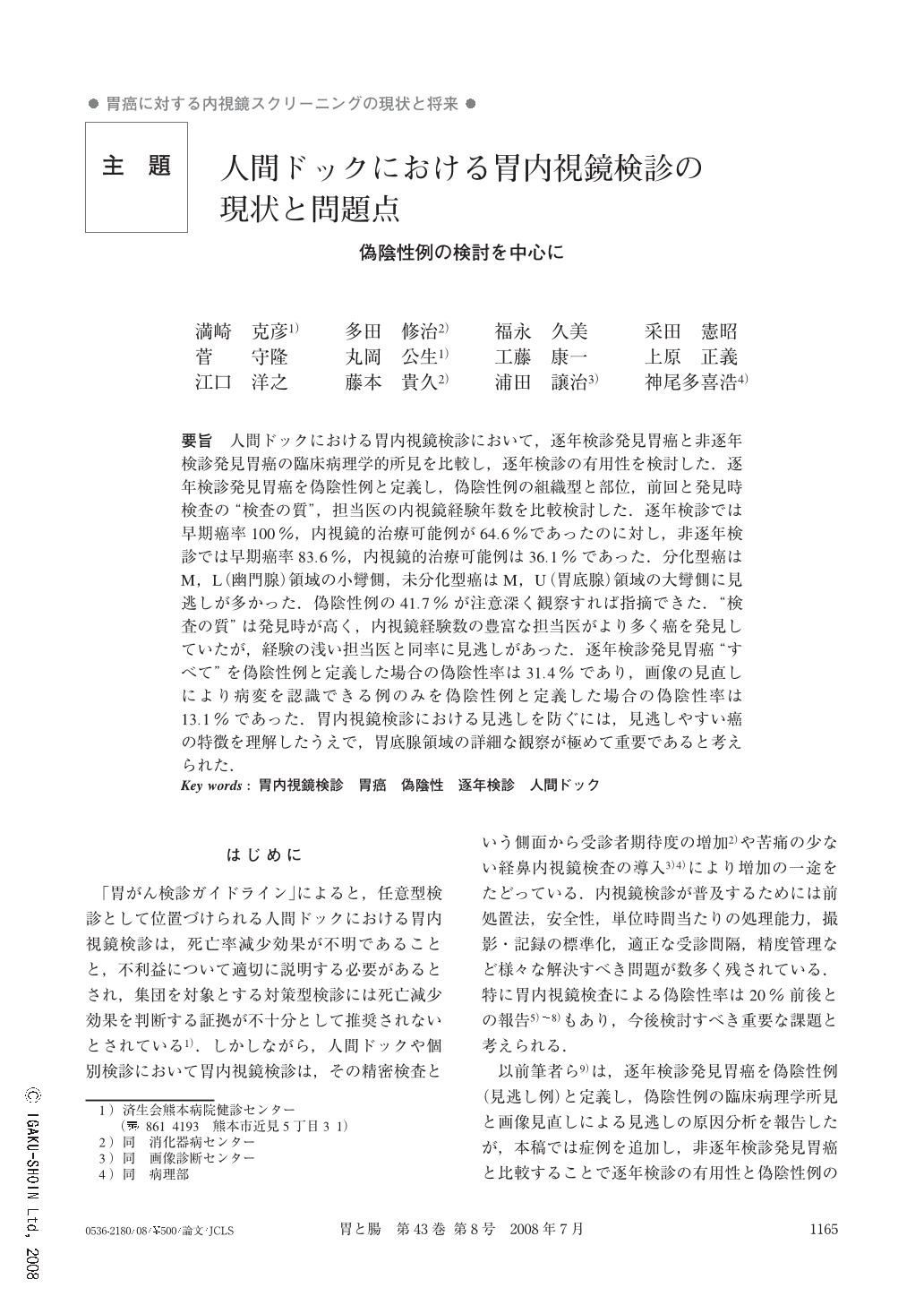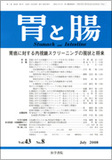Japanese
English
- 有料閲覧
- Abstract 文献概要
- 1ページ目 Look Inside
- 参考文献 Reference
- サイト内被引用 Cited by
要旨 人間ドックにおける胃内視鏡検診において,逐年検診発見胃癌と非逐年検診発見胃癌の臨床病理学的所見を比較し,逐年検診の有用性を検討した.逐年検診発見胃癌を偽陰性例と定義し,偽陰性例の組織型と部位,前回と発見時検査の"検査の質",担当医の内視鏡経験年数を比較検討した.逐年検診では早期癌率100%,内視鏡的治療可能例が64.6%であったのに対し,非逐年検診では早期癌率83.6%,内視鏡的治療可能例は36.1%であった.分化型癌はM,L(幽門腺)領域の小彎側,未分化型癌はM,U(胃底腺)領域の大彎側に見逃しが多かった.偽陰性例の41.7%が注意深く観察すれば指摘できた."検査の質"は発見時が高く,内視鏡経験数の豊富な担当医がより多く癌を発見していたが,経験の浅い担当医と同率に見逃しがあった.逐年検診発見胃癌"すべて"を偽陰性例と定義した場合の偽陰性率は31.4%であり,画像の見直しにより病変を認識できる例のみを偽陰性例と定義した場合の偽陰性率は13.1%であった.胃内視鏡検診における見逃しを防ぐには,見逃しやすい癌の特徴を理解したうえで,胃底腺領域の詳細な観察が極めて重要であると考えられた.
We compared the clinicopathological findings between patients in whom gastric cancer was detected during annual and non-annual screening, and examined the usefulness of annual screening. Patients in whom gastric cancer was detected during annual screening were defined as false-negative patients. In these patients, we compared the histological type, site, quality of the examination on the previous examination and at the time of detection, and the attending physician's experience regarding endoscopy. In the annual screening group, the rate of early cancer was 100%. Endoscopic treatment was possible in 64.6%of the patients. In the non-annual screening group, the rate of early cancer was 83.6%. Endoscopic treatment was possible in 36.1%of those patients, thus suggesting the usefulness of annual screening. Most differentiated carcinomas on the lesser curvature side of the M and L (pyloric gland) regions and undifferentiated carcinomas on the greater curvature side of the M and U (gastric fundus gland) regions had been missed. In 41.7%of the false-negative patients, close observation might have facilitated a cancer diagnosis. The quality of examination was higher at the time of detection. Attending physicians who had experience in the use of endoscopy in many patients detected a larger number of cancer lesions. However, the rate of missing the cancer lesions was similar to that of the non-skilled attending physicians. Regarding all those with gastric cancer detected on annual screening as false-negative patients, the proportion of false-negative patients was 31.4%. Regarding only patients in whom lesions could be recognized via a review of the imaging findings as false-negative patients, the proportion of false-negative patients was 13.1%. Considering the characteristics of cancer that may be easily missed, close evaluation of the gastric fundus region may be important for preventing misdiagnoses during gastroendoscopic screening.

Copyright © 2008, Igaku-Shoin Ltd. All rights reserved.


